
Candida Martinelli's Italophile Site

Main
Page This family-friendly site celebrates Italian culture for the enjoyment of children and
adults. Site-Overview
Monty Python's 'What
have the Romans ever done for us?' scene from the movie Life of
Brian below Books
About Ancient Roman Life
Video of Ancient City of Rome below This is a model of a Roman era
apartment block ('insula'). Click on the image to read what it
was like to live in one. The ground floor ruins of Roman era
apartment blocks ('insulae'). You'll note that the distance
between them, forming the street, was very narrow. Most streets in
Ancient Rome were just alleyways. There were only a few avenues
(via - viae) that could allow for two lanes of wagon traffic.
There were many streets that allow one wagon, but most streets were for
pedestrians only. At a certain point, there was a law that carts
and wagons could use the streets only after nightfall, so there was less
street traffic during the day. To learn more on your own, try the
History
For Kids site, and the Daily
Life in Ancient Rome site. This is a reproduction of what the
front of a typical two-story 'domus' would have looked like. Some
had shops in the front. The entrance is in the middle looking into
the Atrium. If a family gained in wealth, they would often add
another storey to the house. Click on the image of the Atrium
(entry room with shallow pool to collect rain water) of a Roman 'domus'
to visit a wonderful clickable Roman home to learn more about the 'domus'. Wealthy citizens could decorate
their bedrooms ('cubiculae' from which we get the word cubicle, which
was the usual size of a Roman bedroom) elaborately as in the image
above, but normally the bedroom was small and decorated with painted
walls and simple furniture. Guests were treated to the fancier
public rooms. To read more, click on the image
above. This is a reproduction of a
Roman-era kitchen in a 'domus'. It was generally a room only
frequented by the slaves, so it was small, dark and poorly
ventilated. There would have been an oven and the oven embers would be
set under the burners to make a stove top cooker. A countryside villa outside Pompeii
is a museum with a detailed website. Visit my
Pompeii Page. This is a mural found in Pompeii of
a countryside villa, looking from the garden to the colonnade, as in the
restored villa garden, one image up. Visit
my Pompeii Page. This image is of the entranceway to
a villa in Pompeii. Click on the image to go to a clickable map of
the site, that allows you to view images of site without having to go to
Pompeii. And visit my Pompeii Page. Wall painting from a 'Palazzo'. Floor mosaic from a 'Palazzo'. This beautiful wall painting is from
a home in Pompeii. To view two pages of Pompeii images, click on the
image above.
Modern day Italian 'Palazzi', now
divided into condominiums and apartments. Modern Italian life with apartment
blocks, ground floor shops, no garages and lots of cars. This is a countryside villa from the
1500's, built in the Roman style and to a Roman plan, restored as a tourist rental property. This is an aerial view of the same
property showing part of the estate surrounding it, and the courtyard within.
Today,
Italy is famous for designing and manufacturing sleek, efficient, modern
kitchens, a far cry from Roman times.
The one above is by Scavolini,
the top selling kitchen maker in Italy. Two other Italian kitchen
designers are Torchetti, Novalinea,
Monty Python's famous 'What have the Romans ever done for us?' scene
from the film Life of Brian, about a man mistaken for the Messiah
throughout his sad life.
Visit
my Marcus
Aurelius's Meditations page Visit
my Ancient
Roman History page
Mysteries set in Ancient Rome page
A site visitor, Theresa Caruso,
has written
an article about the history of the Roman Colosseum for the holiday
accommodation site Venere.com. Open, from my site, the PDF of a classic textbook
about Ancient Rome and save it to your PC. Or right-click on the
link and Save Link As to your PC without opening the book. Or for an online, concise history of Ancient Rome, visit this
educational site.
This
digital map of the ancient city of Rome will help keep your
characters whereabouts clear.
To see how the characters would have travelled around the Roman empire,
check out this ancient Roman
route-planner.
A beautiful video tour of ancient
Rome, which brings the place alive. It is made by the
Rome Reborn Project.
Homeschooler Heather Ventura's Ancient Rome Links
Roman society
consisted of the few very rich persons, and a vast poor population, and
the still vaster slave population that is estimated to have been almost
equal to the free population, and at times even more. So it is fair to say that during
Roman times, the average person in Rome was poor. The society was famously sadistic. It was an institutionalized
sadism, or a sadism that society embraced as "normal", and actually
encouraged. Slavery, torture, horrific capital punishment, and
mutilations were seen not just as punishment, but encouraged as
entertainment. Blood sports bred the sadistic perversion in most
members of society. It was only when Christianity grew in
followers, that Roman society grew less sadistic. The average free citizen lived in an apartment in an apartment block
of up to five stories high (insula). Any higher, and the
stone and mortar would collapse from the weight of the structure.
Workshops and the homes of the artisans and their slaves occupied the
ground floor level. Early versions of these buildings were made of wood. And to the
brick and mortar buildings, often wooden extensions were added on to the
tops to provide more living space. But they were prone to fire and
collapse, so they were discouraged by the local authorities. Apartments would often consist of only one room inhabited by an
entire family. The floors and walls were normally unfinished and
undecorated. Generally the conditions were unsanitary, noisy,
smelly an unsafe. A curtain would cover the doorway.
Sometimes a guardian would monitor the hallway during the day to stop
theft. There was no running water or indoor plumbing in these apartment
blocks, except on the ground floor, which was too expensive for the poor
to own or rent. Water had to be carried up in buckets. And usually a
pot on the floor was used as a toilet, and then the contents dumped from
the open window, that had no glass and usually only shutters or a
curtain. Most people used the public lavatories and
baths. They did not have access to kitchens, and cooking in the apartments
was frowned upon because of the fire risk, and smoke that would fill the
building. So they lived on prepared food bought from tavernae
(pubs), or something like today's trattorie in Italy where many
prepared items could be ordered, wrapped up and taken home, or eaten in
the street. To keep the many poor of ancient Rome happy, the authorities of the
Republic tried to
provide the famous 'bread and circuses', or food and
entertainment. So in the capital, at least, monthly giveaways of
bread or grain were common, but only for freemen. But normally, grain was purchased and brought
to a baker who then ground it and baked the bread for the
customer. Later during the Empire, more food assistance programs were instituted to
fend off starvation, which was a real problem as the rich got richer and
the poor got poorer. The food giveaways (annona) were
regulated by issuing tokens (tesserae) for grain or bread, oil,
other foods, and occasionally meat. A school free lunch program (alimenta)
was also instituted. Slaves lived wherever their master said and in whatever conditions
the master deemed appropriate, which was usually horrible. The
fantasy of most slaves being well treated members of the family is just
that, a fantasy. In a society that disposed of unwanted babies by
dumping them with the trash, charity towards slaves was not the norm. Slaves could buy their freedom by saving up their money that they
earned working jobs outside of the master's house. A master could
free a slave. Some did so in their wills, but family members had
incentive to fight those wills, as the slaves were deemed assets and of
value. Once freed, a slave could marry and receive food allowances
from the state. One interesting note on Roman living is the fact that few
streets were named and addresses were not numbered. In small towns
this was little problem as one could just ask for directions from a
passerby. But just as in Japan today, to find a specific home in a
Roman Italian city, you had to get a map drawn by someone that included
detailed descriptions of local landmarks including notable buildings,
shops, or even trees and shrubs. Wealthy Romans lived in homes (domus), or villas, or
palaces. The domus was an urban, one or two-story brick home built around an
open courtyard that contained a fountain that was fed by rain water
collected on the tiled roof. The homes often had running water and
indoor plumbing, and were finished with murals and mosaic
floors. The least visible rooms were the least decorated.
For example, the slaves quarters were plain. Villas were in the countryside on the farms. They consisted of
a part for the land owner that resembled the domus, and a part
for the farm workers that was less elaborate, and storage buildings for
crops and animals. Palaces were built in the cities by the richest citizens, usually on
the hillsides around the towns, so they could enjoy breezes, less noise,
and more space. They were richly finished with murals on the walls
and mosaics on the floors. They were furnished with items from all
over Rome's empire. To a large degree, these Roman living divisions still exist today in
Italy, however the standards for the average citizen have risen.
The combination of capitalism and democracy (the European
social-democracy variety) has created a large middle class, reduced
extreme poverty, and allowed a very rich class to remain. The limited space in Italy has ensured that the
space-saving Roman apartment buildings have remained, if only converted
into sturdier and cleaner buildings with glass windows to block out the
still concussive noise from the busy streets and shops below. The five story apartment blocks remain, but none are from Roman
times. Some apartments are rented, but because of strict rent
control laws, most apartments are either sold as condominiums, rented to
foreigners at unregulated rents, or left vacant. In densely
populated, and highly urbanized Italy, the apartment is home for most
Italians. Palazzi, or palaces are still what the grander houses in the
cities are called. Very few today are lived in by one
family. Normally they are divided up into apartments and either
rented out, or sold as condominiums. Those not divided up are often
converted to museums, or owned by schools, restaurateurs, corporations,
or by the town hall and used for special events. In the city centers and in the various neighborhoods, shops occupy
the ground floor spaces. Garages are rare, and parking is
scarce. Bakeries are the only shops allowed open on Sundays, but
no one brings in grain to be ground anymore. Actually, bakeries
sell yeast and flour, of various refinement and mixtures, to those few
who bake at home. When Italians speak of home, they call it casa. For
English speakers this lacks the distinction between house and home, a
distinction that I've found few Italians comprehend. This may be
because, for most Italians, their house is their home. Most people
spend their childhoods in one house, and only leave it when they
marry. Villas (ville) are what some may have in the countryside,
inherited from family or purchased as a weekend retreat from the
city. Today, normally, the land changes hand separately from the
building, so you can purchase or rent a renovated villa, but have
limited access to the land. Those who live in the countryside (less than 10% of the population in
the highly urbanized Italy), more often than not, live in very primitive
conditions in old villas. Many of these villas lack conveniences
like baths, heating and telephone connections. Modernizing an old villa, which seems to be a fantasy of many
foreigners, can be expensive and time-consuming, as well as frustrating
because of the many permits and contractors you have to contend
with. Also, many of these buildings have structural damage and
damp problems that are difficult to repair. Is is interesting to note a sharp rise in foreign women hired as
domestic workers in Italy. The lack of prospects for these women
in their own countries, and their isolation in Italian society, often
undocumented, puts them in the category of 'modern domestic
slaves'. Cases of abuse of these women have shocked Italian
society into trying to deal with this new, heart-breaking
phenomenon.
Many other illegal immigrants to Italy work as 'slaves' for organized
crime syndicates selling contraband goods on the street, making
contraband goods in secret factories, and prostituting themselves.
It seems each time one crime group is stopped, several more are
discovered, staffed by the poverty-stricken from the former Soviet
block, and from north and central Africa.
While there is no legal slavery in Italy anymore, human nature ensures
that cheap labor will always be exploited, and the worst in human nature
will emerge when there is buck to be made from other people's
vices. It brings to mind the graffiti on a wall in Pompeii
advertising the services of a foreign prostitute, giving directions to
the brothel, and the words of a satisfied customer. Sadly, some
things never change.
The prices of
staple goods are closely monitored in modern Italy, and some are still
run as monopolies of the state, or have some state involvement.
Oddly, the two most famous ones are tobacco and salt. 'MS' is one
of the best selling brands of cigarettes in Italy, and the 'MS' stands
for 'Monopolio Statale' or 'State Monopoly'. And if you
want to buy salt in Italy, you have to get it at the state-licensed
tobacconist. Since the introduction of the Euro, replacing
the Lira, consumer groups have complained loudly about the quick rise in
the cost of staple goods, which seem to include a cup of coffee at the
local bar. When prices were converted from Lire to Euro, many
shops rounded the figure upward to get a bit extra. The
government has repeatedly produced reports that show a rise in
inflation of between 2-3 percent. Consumer groups have just as
often produced reports showing a rise of up to 10-20 percent. The
truth is somewhere in between, but the reason is not solely the rounding
up of prices in Euro. The government has been much more
successful in collecting taxes from small to medium-sized businesses in
the past few years. When their taxes go up, so do their prices to
the consumer in an effort to compensate for their lost
'income'. While
the system of government and economics has altered since Roman times, it
is the industriousness of small to medium-sized Italian businesses,
often run by families, that are the basis of the Italian
economy. So any change in their tax base, means ripples
through the Italian economy. This reason has not been talked about as much in
the media, probably because the high rate of tax evasion is something
the Italian government does not like to advertise. The
subject of bread is still a contentious issue in Italy. It is a
daily purchase for most families, and can come to over 100 dollars/euro
per month. Pre-sliced bread in plastic sacks, as can be
found in northern Europe and in English-speaking countries, is a novelty
in Italy and is sold as 'a bread that you don't have to buy every day
because it can stay good up to a week'. If you've ever eaten Italian
bread fresh from the baker's oven, you will recognize 'good' as a relative
term. There is also a shortage of professional bakers in Italy, and
the association has lobbied the government to allow immigration from
north Africa from their very talented bakers to come directly into Italy
as apprentices in Italian bakeries. It seems local Italians don't
like the early hours, hard work, and having to work on Sundays.
Recently, with the sudden and quick rise in wheat prices, some Italians
have been returning to home bread baking, to save money on their daily
staple. Grandmothers are proudly turning out loaves for the
family, at less than half the price charged in bakeries. I recall an
elderly Italian woman telling me about the communal bread oven in her
village during WWII. All the women would prepare their dough in
the evening and let it rise overnight. In the morning, the
appointed person would stoke the communal bread oven, and put in and
remove the women's loaves. Something like a competition happened
each morning to see which woman consistently had the best risen and
shaped loaves. It will be interesting to see if self-baking
competitiveness returns to Italy! So as
you can see, the changes from Roman times are more in terms of degrees
than in revolutionary changes. The system of government would be
the biggest difference, but oddly, the length in office of many Italian
governments is not much longer than the lives in office of many of
Rome's Caesars.
If you'd like to read more about life in Ancient Rome, you can use
this Amazon.com search tool to see what's available, what people say
about the books, and what they cost. If you'd like to learn the history in a fun way, there are many popular
mystery / thriller series set in Ancient Rome. I feature some on this
page: Mysteries
Set In Ancient Rome.
Here
are some books and a DVD from the History Channel at Amazon.com about life in Ancient Rome.
Two are for children.
The most complete company for Roman reproductions, of museum quality
coins, jewelry, etc., is
Westair.
Visit their website and have fun visiting the ancient past.
August Living
brings Italy's ancient past to life with it's pewter collection.
All made in Italy, with classic patterns from antiquity, the stunning
collection transports you to another time and place. They have
tableware and home decor items. Here are just a few...
Wine Decanter
Serving Tray
Wine Decanter The Gruppo Soratte
site, run by a site visitor, offers a selection of handmade Italian
products. Their newest line is of
replicas of
ancient Roman pottery and statuary.
See artists' renderings of ancient Rome at the University of Minnesota's
Department of Classical and Near Eastern Studies' wonderful site.
The Crystalinks.com site has a broad summary of ancient Roman life and
culture. This link is to the list of topics page.
Currency in Ancient Roman times would seem very familiar to us today,
since our coinage is based on the Roman examples. Here are two
links to articles about Roman coins.
Art Institute
Chicago's Roman Coin Page
Or for an online, concise history of Ancient Rome,
visit this
educational site.
Rome Reborn 2.2: A Tour of Ancient Rome in 320 CE from Bernard Frischer on Vimeo.

How
people lived in Italy during Roman times, and today
![]()
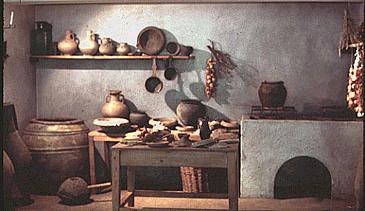
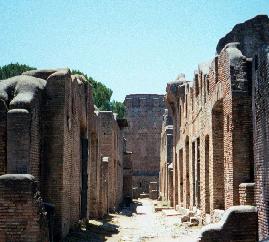
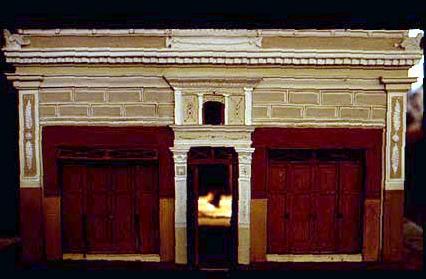

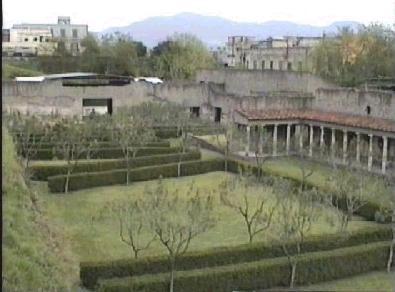
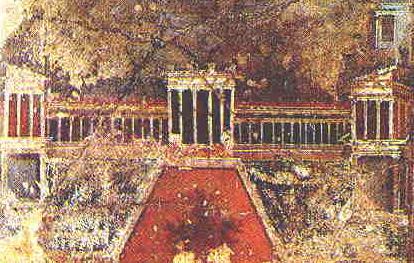
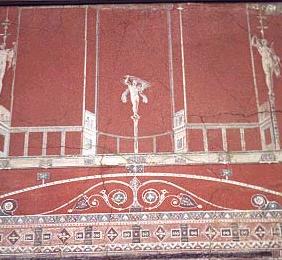
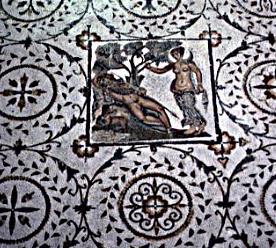
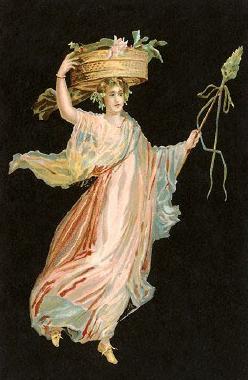
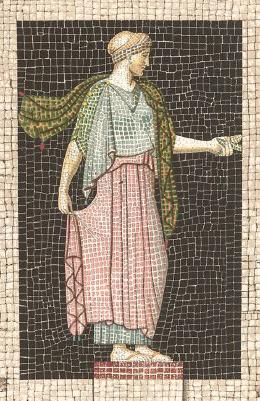
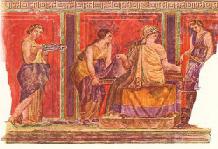
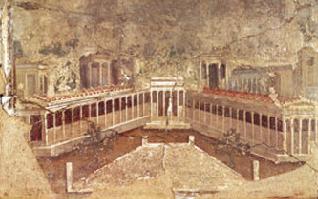
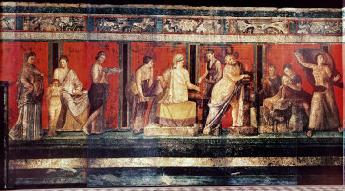
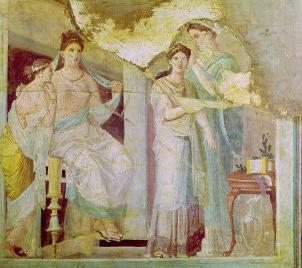
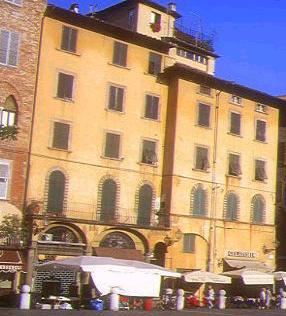

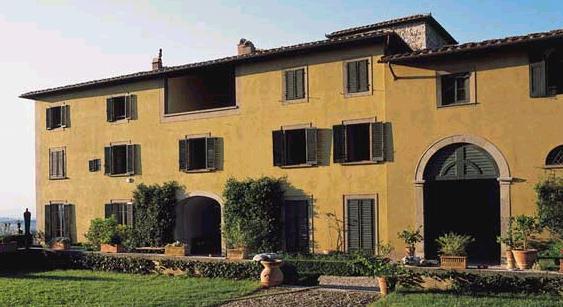
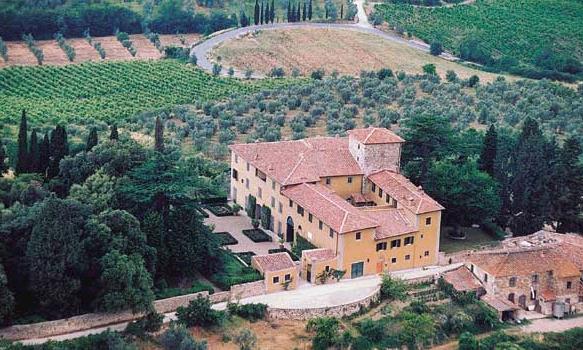

![]()
Roman Society
Average Free Citizen
Poverty and Slavery
Wealthy Romans
Today in Italy
City Living
Countryside Living
Modern "Slavery"
Costs of Modern Life
Bread
Conclusion
Books About
Ancient Roman Life
Roman Reproductions
Great External Links
Open my PDF of a
classic history of Ancient Rome textbook and save
it to your PC
Rome Reborn